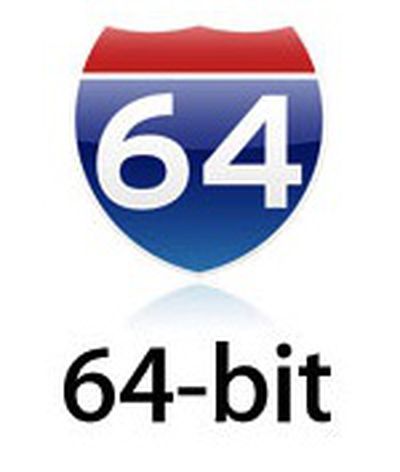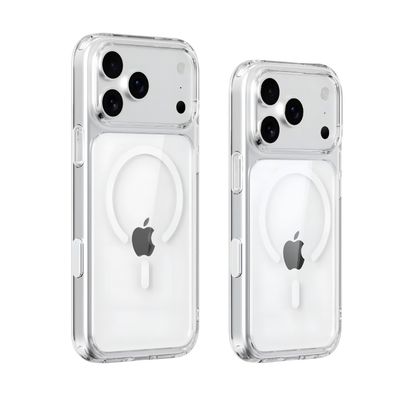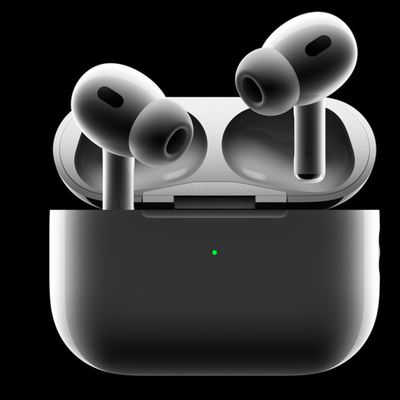OS X Mountain Lion Officially Drops Support for Some Older 64-Bit Macs
 With Apple having seeded the golden master build of OS X Mountain Lion to developers earlier this week, the company has locked in which Macs will support the forthcoming version of the operating system. While the machine requirements have been known for some time, the seeding of the final public release is a good time to remind users which machines will support Mountain Lion.
With Apple having seeded the golden master build of OS X Mountain Lion to developers earlier this week, the company has locked in which Macs will support the forthcoming version of the operating system. While the machine requirements have been known for some time, the seeding of the final public release is a good time to remind users which machines will support Mountain Lion.
Your Mac must be one of the following models:
- iMac (Mid 2007 or newer)
- MacBook (Late 2008 Aluminum, or Early 2009 or newer)
- MacBook Pro (Mid/Late 2007 or newer)
- MacBook Air (Late 2008 or newer)
- Mac mini (Early 2009 or newer)
- Mac Pro (Early 2008 or newer)
- Xserve (Early 2009)
Ars Technica has more on Apple's decision, including discussion of why Apple has dropped support for some early 64-bit Macs that do support OS X Lion.
Apple declined to tell us the reasoning behind leaving some of these models out of potential Mountain Lion upgrades, but we suspected it was related to an updated graphics architecture that was designed to improve OS X's graphics subsystem going forward. Our own Andrew Cunningham suspected the issue was related to graphics drivers, since the GPUs not supported under Mountain Lion had drivers that were written before 64-bit support was common.
Information included with the first Mountain Lion GM now corroborates the connection to 32-bit graphics drivers as the culprit. While Mountain Lion is compatible with any Mac capable of running a 64-bit kernel, the kernel no longer supports loading 32-bit kernel extensions (KEXTs).
The report notes that some of the GPUs used in early 64-bit Macs were deprecated before 64-bit KEXTs were in common usage, and thus they were never upgraded from their original 32-bit KEXTs. With the affected machines now being a number of years old, Apple apparently decided that it was not worth investing the resources to upgrade those drivers to 64-bit in order to support OS X Mountain Lion.
Popular Stories
Apple's next-generation iPhone 17 Pro and iPhone 17 Pro Max are just over two months away, and there are plenty of rumors about the devices.
Below, we recap key changes rumored for the iPhone 17 Pro models.
Latest Rumors
These rumors surfaced in June and July:Apple logo repositioned: Apple's logo may have a lower position on the back of the iPhone 17 Pro models, compared to previous...
Apple should unveil the iPhone 17 series in September, and there might be one bigger difference between the Pro and Pro Max models this year.
As always, the Pro Max model will be larger than the Pro model:iPhone 17 Pro: 6.3-inch display
iPhone 17 Pro Max: 6.9-inch displayGiven the Pro Max is physically larger than the Pro, it has more internal space, allowing for a larger battery and...
In 2020, Apple added a digital car key feature to its Wallet app, allowing users to lock, unlock, and start a compatible vehicle with an iPhone or Apple Watch. The feature is currently offered by select automakers, including Audi, BMW, Hyundai, Kia, Genesis, Mercedes-Benz, Volvo, and a handful of others, and it is set to expand further.
Apple has a web page with a list of vehicle models that ...
The calendar has turned to July, meaning that 2025 is now more than half over. And while the summer months are often quiet for Apple, the company still has more than a dozen products coming later this year, according to rumors.
Below, we have outlined at least 15 new Apple products that are expected to launch later this year, along with key rumored features for each.
iPhone 17 Series
iPho...
Apple is continuing to refine and update iOS 26, and beta three features smaller changes than we saw in beta 2, plus further tweaks to the Liquid Glass design. Apple is gearing up for the next phase of beta testing, and the company has promised that a public beta is set to come out in July.
Transparency
In some apps like Apple Music, Podcasts, and the App Store, Apple has toned down the...
Since the iPhone X in 2017, all of Apple's highest-end iPhone models have featured either stainless steel or titanium frames, but it has now been rumored that this design decision will be coming to an end with the iPhone 17 Pro models later this year.
In a post on Chinese social media platform Weibo today, the account Instant Digital said that the iPhone 17 Pro models will have an aluminum...
New renders today provide the best look yet relocated Apple logo and redesigned MagSafe magnet array of the iPhone 17 Pro and iPhone 17 Pro Max.
Image via Majin Bu.
Several of the design changes coming to the iPhone 17 Pro model have been rumored for some time, such as the elongated camera bump that spans the full width of the device, with the LiDAR Scanner and flash moving to the right side.
...
Amazon is soon to be back with its annual summertime Prime Day event, lasting for four days from July 8-11, the longest Prime Day yet. As it does every year, Prime Day offers shoppers a huge selection of deals across Amazon's storefront, and there are already many deals you can get on sale ahead of the event.
Note: MacRumors is an affiliate partner with Amazon. When you click a link and make a ...
Apple's position as the dominant force in the global true wireless stereo (TWS) earbud market is expected to continue through 2025, according to Counterpoint Research.
The forecast outlines a 3% year-over-year increase in global TWS unit shipments for 2025, signaling a transition from rapid growth to a more mature phase for the category. While Apple is set to remain the leading brand by...
 With Apple having seeded the golden master build of OS X Mountain Lion to developers earlier this week, the company has locked in which Macs will support the forthcoming version of the operating system. While the machine requirements have been known for some time, the seeding of the final public release is a good time to remind users which machines will support Mountain Lion.
With Apple having seeded the golden master build of OS X Mountain Lion to developers earlier this week, the company has locked in which Macs will support the forthcoming version of the operating system. While the machine requirements have been known for some time, the seeding of the final public release is a good time to remind users which machines will support Mountain Lion.




















